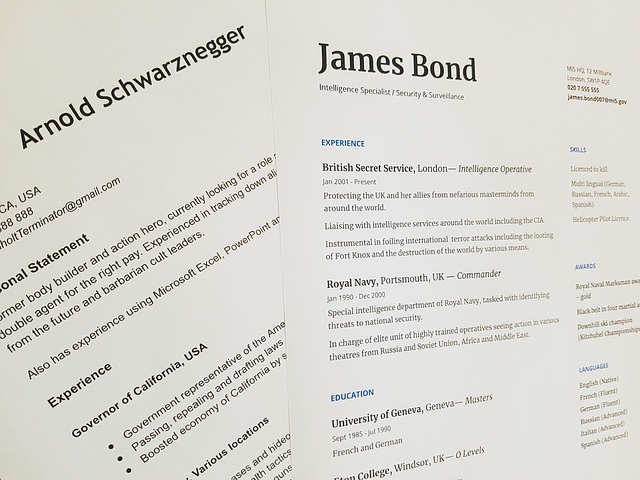Envelope Stuffing in Japan - how to get started in the industry
Envelope stuffing, a task that involves inserting documents or promotional materials into envelopes, has been a part of the mailing industry for decades. In Japan, where direct mail marketing remains relevant despite the digital age, envelope stuffing jobs continue to exist. However, it's important to approach this industry with realistic expectations and a clear understanding of what it entails. This article will explore the ins and outs of envelope stuffing in Japan, providing insights on how to get started and what to expect.

What is envelope stuffing and how does it work in Japan?
Envelope stuffing is the process of placing items such as letters, flyers, or other promotional materials into envelopes for mass mailing. In Japan, this task is often part of larger direct mail campaigns used by businesses to reach potential customers. The work typically involves sorting materials, inserting them into envelopes, sealing the envelopes, and preparing them for mailing. While some of these processes have been automated in larger operations, many smaller businesses and organizations still rely on manual envelope stuffing.
How do I do envelope stuffing at home in Japan?
Doing envelope stuffing at home in Japan is possible, but it’s crucial to be cautious and verify the legitimacy of any opportunities. Legitimate work-from-home envelope stuffing jobs are rare. If you do find a genuine opportunity, you’ll typically receive materials from the company, including envelopes, inserts, and mailing lists. You’ll need a clean, organized workspace and attention to detail to ensure accuracy. Some basic steps include:
-
Sort materials by type or mailing address
-
Insert the correct items into each envelope
-
Seal the envelopes securely
-
Arrange the envelopes in the specified order for mailing
Remember that most reputable companies prefer to handle their mailing in-house or through professional mailing services, so be wary of scams offering easy money for envelope stuffing at home.
What are the income prospects for envelope stuffing in Japan?
The income prospects for envelope stuffing in Japan are generally low, and it’s not typically considered a viable full-time career option. Most envelope stuffing jobs, when legitimate, offer piece-rate pay, meaning you’re paid per envelope stuffed rather than an hourly wage. This can result in earnings well below minimum wage, especially for inexperienced workers.
Prices, rates, or cost estimates mentioned in this article are based on the latest available information but may change over time. Independent research is advised before making financial decisions.
While specific data for Japan is limited, envelope stuffing jobs globally often pay between ¥1 to ¥5 per envelope. However, the actual rate can vary widely depending on the complexity of the task and the employer. It’s important to note that many offers promising high earnings for envelope stuffing are often scams, so exercise caution when considering such opportunities.
How do I get started with envelope stuffing in Japan?
Getting started with envelope stuffing in Japan requires careful research and a realistic approach. Here are some steps to consider:
-
Look for legitimate job postings on reputable Japanese job boards or through temp agencies.
-
Be wary of ads promising high pay for simple work-from-home envelope stuffing jobs.
-
Consider contacting local businesses or organizations that might need mailing assistance.
-
Prepare a resume highlighting your attention to detail and ability to work efficiently.
-
Be ready to start with entry-level positions, possibly in a company’s mailing room.
Remember that direct employment with a company for on-site work is more likely to be legitimate than work-from-home offers.
What skills are required for envelope stuffing jobs in Japan?
While envelope stuffing might seem straightforward, certain skills can make you more successful in this field:
-
Attention to detail: Ensuring the correct materials are inserted into each envelope is crucial.
-
Manual dexterity: Quick and accurate hand movements are essential for efficiency.
-
Organization: Keeping materials sorted and workspaces tidy is important for productivity.
-
Basic Japanese language skills: Understanding instructions and communicating with supervisors is necessary.
-
Reliability: Meeting deadlines and maintaining consistent work quality is valued.
-
Stamina: The work can be repetitive and may require long periods of sitting or standing.
Developing these skills can help you perform better in envelope stuffing roles and potentially open doors to other opportunities in mailing or administrative work.
Are there alternatives to traditional envelope stuffing in Japan?
As the mailing industry evolves, alternatives to traditional envelope stuffing are emerging in Japan. These options may offer more stable employment and better income prospects:
-
Mail sorting and processing: Working in postal facilities or mail rooms of large companies.
-
Digital marketing: Assisting with email campaigns, which are the digital equivalent of envelope stuffing.
-
Printing and mailing services: Operating machinery in professional mailing houses.
-
Data entry: Maintaining mailing lists and customer databases for direct mail campaigns.
-
Package handling: Working in fulfillment centers for e-commerce companies.
These alternatives often provide more job security and potential for advancement compared to traditional envelope stuffing roles.
In conclusion, while envelope stuffing jobs do exist in Japan, they are not as prevalent or lucrative as some might believe. It’s essential to approach this industry with caution, verify the legitimacy of any job offers, and consider more stable alternatives within the mailing and marketing sectors. By developing relevant skills and exploring various options, you can find opportunities that align with your career goals and provide more sustainable income prospects.




